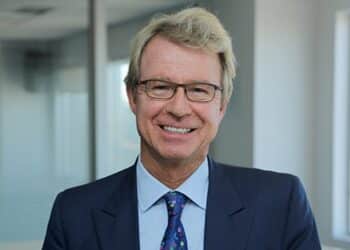“Pinnacle is the same company that it was three months ago, when we delivered record first-half profits and the short-term outlook looked incredibly rosy for once,” Macoun said.
“We have the same core purpose, business model, competitive advantages and platform, the same strategies and the same growth prospects.”
The multi-affiliate investment firm provided a March quarter update showing funds under management (FUM) rose from $156.2 billion to $159.9 billion over the three months to 31 March, supported by $6.2 billion in net inflows. Retail FUM increased 3.4 per cent to $36.6 billion, while international FUM climbed from $44.8 billion to $47.3 billion.
This builds on its strong half-year result to 31 December, where Pinnacle posted a net profit after tax of $75.7 million, up from $30.2 million in the prior corresponding period.
The Pinnacle CEO acknowledged that heightened equity market volatility is weighing on earnings from the group’s listed equities affiliates and seed investments, but said growing diversification into private markets and non-equity-linked strategies is helping shield the broader platform.
As a result, he maintained that market confidence in Pinnacle’s offering remains “as strong as ever”, underpinned by multiple growth levers across geographies and channels.
“We feel as good about the quality of our company and our platform as we ever have,” he said.
“Whatever we encounter, we will be resilient to negative developments and grow strongly on average throughout market cycles.”
A major pillar of Pinnacle’s long-term strategy is expanding its offshore footprint, particularly in the UK and Europe. “We’ll be expanding there,” Macoun said.
He noted the group’s successful track record continues to build confidence among prospective affiliates and investors, reinforcing momentum behind Pinnacle’s expansion plans.
Pinnacle now counts five overseas affiliates, including Life Cycle Investment Partners in the UK, which launched last year with former Royal London Asset Management executives and has already secured $1 billion in assets – half of which are from retail clients.
Speaking in a prior investor webinar, Macoun said Pinnacle was seeing more acquisition opportunities than ever and had already raised additional funds to capitalise on the pipeline. But he stressed that growth would not come at the expense of discipline.
“The pace and size of opportunities is not limited by the opportunity set; it’s limited by our pace,” he said. “We’re doing this slowly and looking to work with high-quality firms.”
He noted the importance of maintaining alignment with Pinnacle’s core competencies and warned against the perils of hasty international expansion.
“We are well aware of the risk of firms making ill-advised expansion decisions overseas … We won’t be proceeding in a haphazard or illogical way.”
Pinnacle attracts $4.8 billion from Aussie instos
Macoun’s accompanying presentation, filed with the ASX, reveals that Pinnacle had attracted $4.8 billion in Australian net institutional inflows financial year-to-date, driven by strong demand for core global and Australian equities, as well as public and private credit strategies.
The firm secured several new global equity mandates from “marquee institutional investors”, along with OCIO and insurance mandates across credit.
Also highlighted in the presentation, the firm noted the ongoing commitment from Australia’s largest super funds to active management, supported by strong member contributions, through a blend of internal and external managers. Meanwhile, medium-sized funds are increasingly embracing passive and enhanced passive strategies to better manage risk and control costs.
Looking ahead, Pinnacle expects a shift by institutional investors towards neutral positions in both Australian and global public equities to moderate inflows.
Moreover, the firm tipped Australia will become “a more compelling destination for Asia-Pacific private markets capital flows” in the wake of China’s geopolitical risk, with infrastructure viewed as a particularly resilient and attractive asset class.
The firm also pointed to ongoing consolidation across superannuation, wealth and insurance as a “double-edged sword” that presents both risks and opportunities for flows.
“Australian institutional fund consolidation creates risk to mandate retention,” Pinnacle said in the presentation.







